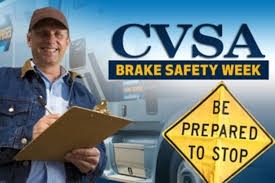Although most driving occurs during daylight hours, more accidents happen at night—and most fatal accidents happen after dark. Professional drivers know that safe night driving requires maximum defensive driving skills. Add rain into the mix, and the risk increases significantly.
The hours between 12 a.m. and 6 a.m. are the most dangerous for crashes. Even though there are fewer drivers on the road, more accidents occur during this window than at any other time of day. Many professional drivers have routes that begin or end in darkness, so being prepared is essential.
Safe night driving requires preparation, alertness, and a healthy dose of common sense.
What Makes Night Driving Difficult?
-
Poor Visibility – Naturally, there is much less light at night, making it harder to see clearly.
-
Increased Sleepiness – Darkness naturally signals our bodies to rest, making drivers feel more tired.
-
Quieter Roads – Fewer vehicles on the road and the surrounding silence can lead to drowsiness, especially if driving alone.
-
Limited Roadway Lighting – Many rural areas have little or no overhead lighting. In
urban areas, lighting can be poor or confusing due to signs and distractions. Your vehicle’s headlights are your most reliable light source.
-
More Alcohol-Impaired Drivers – Alcohol consumption is more common at night, increasing the risk of encountering impaired drivers.
-
Headlight Glare – Oncoming headlights can cause temporary blindness, increasing the risk of accidents.
-
Night Vision Challenges – Drivers with visual impairments or night blindness are at greater risk after dark.
Tips for Safe Driving at Night
-
Be Aware of Other Drivers
Late at night and early in the morning, you’re more likely to encounter fatigued or impaired drivers. Stay alert, keep a safe distance, and be ready to take action. If a vehicle enters your lane, slow down and move as far right as possible. Never steer into an oncoming lane. -
Reduce Your Speed
Fatigue and limited visibility reduce reaction time. Drive slower on unfamiliar roads and maintain at least a four-second following distance. -
Check Your Headlights
Make sure your headlights are clean, properly aimed, and fully operational during pre- and post-trip inspections. -
Keep Windshields & Lights Clean
Dirty windshields or headlights can make it harder to see and be seen. Clean them at every stop, especially during bug season. -
Don’t Overdrive Your Headlights
You should be able to stop within the distance your lights illuminate. Use the 4-second rule: pick a spot at the farthest point your lights reach and count to four—if you pass it in less than that, you’re going too fast. -
Use High Beams Wisely
Use them when there’s no oncoming traffic to improve visibility, but never leave them on just because others do. That increases the risk of a head-on crash. -
Avoid Looking at Oncoming Headlights
Glancing directly at headlights can cause temporary blindness for up to five seconds. Focus slightly to the right and avoid direct eye contact with lights. -
Keep Your Eyes Moving
Constantly scan side to side to stay alert and avoid “highway hypnosis,” a state where you lose focus and reaction time is impaired. -
Wear Sunglasses During the Day
This helps reduce light sensitivity at night and improves nighttime visibility. -
Take Breaks if Tired
If you feel sleepy, caffeine, loud music, or rolled-down windows won’t help for long. Pullover and rest. Stop every two hours to stretch and refresh, even if you don’t feel tired.
Night Driving Glasses – Do They Help?
Despite popular belief, yellow-tinted or polarized night driving glasses do not improve safety. Studies show they actually reduce visual performance and slow glare recovery. Avoid using them.
Question of the Week
I got a warning letter from the FMCSA regarding my CSA SMS scores… what do I do?
A warning letter is your chance to improve your safety performance and compliance without immediate intervention from the FMCSA.
Read the letter carefully. It identifies your specific safety issues based on SMS data and explains how to access your safety record.
👉 You do not need to respond directly to the letter, but FMCSA will continue to monitor your safety performance. If your scores don’t improve, they may conduct further interventions such as offsite or onsite investigations, which could result in fines or loss of operating authority.
You can review your safety performance at:
http://ai.fmcsa.dot.gov/sms/
CVSA Brake Safety Week: August 24–30
The Commercial Vehicle Safety Alliance (CVSA) has announced that Brake Safety Week will
take place August 24–30, as part of Brake Safety Awareness Month.
During this event, inspectors will:
-
Conduct North American Standard Inspections
-
Focus on brake systems and components, especially brake drums and rotors
CVSA will publish a report later this year on their findings. This is a great time for motor carriers to educate drivers and maintenance providers on brake safety.










